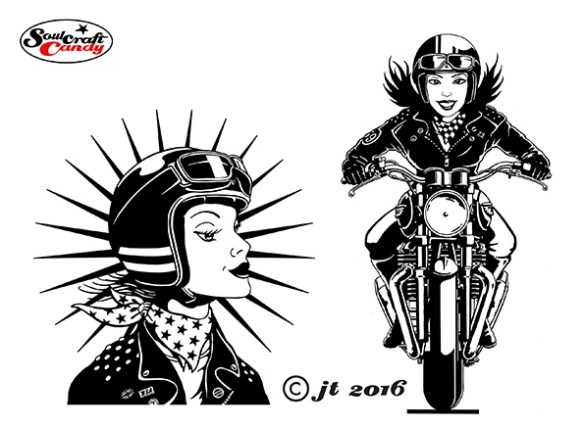
As you will have read in the previous post, I have been expending a lot of energy recently learning how to draw women as part of a project to try and produce some designs for t-shirts for women. It has not been as easy as it sounds, and to be honest with you I’m still not sure that I have cracked it, though I feel I’m certainly making progress.
The journey from the collection of sketches to some finished proposals has been a long one involving lots more sketching and redrawing in an effort to get some kind of unifying style working across the various ideas. This process is invariably made all the more challenging by the considerations and resulting constraints that come from thinking clearly through the whole process of how these shirts are made and printed. The quality of the final printed image is reflected in, and can be traced right back to, the quality of the picture you create in the first place. The shirts made from any of the selected images will be screen printed which means I need to aim for crisp line work and clearly defined details.
In the absence of a more detailed brief I decided that I would go forward with a combination of ideas. Firstly I picked two rather obvious ideas based firmly on a girl riding a bike, and then chose a couple of others based around a more emblematic approach. Each one was worked up as an inked drawing to start with, and done as neatly as I could manage. The girls on the bikes were reasonably straight forward to do in a general sense though I was really conscious of introducing something to try and bring some increased movement to the images. I’m not a fan of using speed lines and blurring to do this, my drawing style doesn’t work that well with them, so elected to simply try and show movement by trying to mimic hair blowing in the wind. The second two choices came from trying to approach them more like logos than pictures and incorporating some recognisable cues from the cafe racer scene like chequer pattern and jacket decoration.

Drawing these things is time consuming enough, but tidying up the high resolution scans can be even more so. Again, it’s back to the quality of the image you start with. Screen printers will invariably ask for vector based artworks and so each drawing needs converting from a scanned bitmap image to vectors in a program such as Adobe Illustrator. The software handles this with ease, but you have to ensure that your starting image is as clean, crisp and high contrast as possible. The vectorising process essentially traces your drawing creating paths and fills as it goes. By adjusting various controls in a dialogue box you are able to influence the fidelity with which the software does this task. The cleaner your starting point, the fewer options the process has for including or excluding small elements of the drawing and details. Once the drawings are vectorised though, you can easily include them in more complicated designs in Illustrator, edit them further, or simply use the resultant artwork as it is. If I was more proficient in Illustrator to begin with I might be able to draw these things directly in the program, but sadly my skills aren’t there yet. At least using this approach I end up with both a good quality digital artwork and a nice ink drawing for the portfolio as well. Because the digital images are now editable, one can make limited changes to them if need be, without the need of doing a whole new drawing.

Finally I thought it would be fun to show the ideas as shirts rather than just images on their own. Plundering an image search for white T’s being worn, it was simply a case of pasting the designs into place to lend a degree of realism to the whole thing. I then sent these to my client/contact and began the waiting process. Let’s see what he comes back with.
